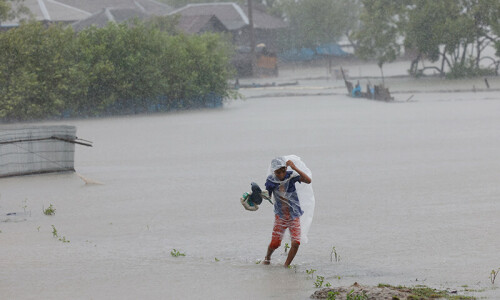CHINESE environmental groups warn that government plans for a slew of hydroelectric dams on the pristine Salween (Nu) river — often called the Grand Canyon of the east for its deep valleys and sweeping views — could jeopardise biodiverse ecosystems and indigenous cultures, and lead to potentially catastrophic seismic events.
China’s state council released a notice last week revealing plans to proceed with over 60 new hydroelectric projects on three major rivers under the government’s 12th five-year plan, from 2011 to 2015.
Plans to build a cascade of 13 dams on the Salween — China’s last free-flowing river — stalled nearly a decade ago under opposition from environmental groups and outgoing premier Wen Jiabao, an ostensible populist and trained geologist.
The river, also known as the Thanlwin, begins on the Tibetan plateau and winds through Thailand before ending in a Burmese estuary. Its headwaters support five million people from 13 ethnic groups, many of whom are subsistence farmers. Entire groups may have to be resettled, dealing a significant blow to their traditional way of life.
The government notice approves similar projects on the Jinsha river, a major headstream of the Yangtze, and the Mekong river, which is already heavily dammed. Two proposed projects border protected areas which contain 7,000 types of plants and up to 25 per cent of the world’s animal species, according to the United Nations Educational, Scientific and Cultural Organisation.
Ma Jun, head of the Beijing-based Institute of Public and Environmental Affairs, said that because local governments and state-owned enterprises profit enormously from building large-scale infrastructure projects such as hydroelec-tric stations, they often cut corners on legally required environmental impact assessments.
“We had a chance to review some of the summaries of the large dam projects on the Jinsha river — there are major gaps identified in those reports, and some of them are very basic ones,” he said.
Scientists warn that building new dams in seismically active southwest China could expose residents to increased risks of landslides, mudslides and earthquakes.
A recent analysis of up to 60 Chinese and American scientific papers suggested that the weight of water in the massive Zipingpu Dam reservoir may have caused the 2008 Sichuan earth-quake, which killed about 80,000 people. — The Guardian, London











































Dear visitor, the comments section is undergoing an overhaul and will return soon.